Kia Ceed VS Ford Focus – Specs, Efficiency & Price Comparison
Which model is the better choice – the Kia Ceed or the Ford Focus? We compare performance (140 HP vs 280 HP), boot capacity (395 L vs 392 L), efficiency (6 L vs 4.90 L), and of course, the price (23100 £ vs 27500 £).
Find out now which car fits your needs better!
The Kia Ceed (Hatchback) is powered by a Petrol MHEV or Petrol engine and comes with a Automatic or Manuel transmission. In comparison, the Ford Focus (Hatchback) features a Petrol MHEV, Diesel or Petrol engine and a Manuel or Automatic gearbox.
When it comes to boot capacity, the Kia Ceed offers 395 L, while the Ford Focus provides 392 L – depending on what matters most to you. If you’re looking for more power, you’ll need to decide whether the 140 HP of the Kia Ceed or the 280 HP of the Ford Focus suits your needs better.
There are also differences in efficiency: 6 L vs 4.90 L. In terms of price, the Kia Ceed starts at 23100 £, while the Ford Focus is available from 27500 £.
Compare all the key specs now and find out which model fits your lifestyle best!
When it comes to compact hatchbacks, the Ford Focus and Kia Ceed both offer compelling options for drivers seeking a blend of practicality and performance. The Ford Focus stands out with its agile handling and sporty driving dynamics, making it a joy on winding roads. Meanwhile, the Kia Ceed impresses with its generous standard features and excellent build quality, providing exceptional value for money in the competitive segment.
Kia Ceed
The Kia Ceed stands out in the compact car segment with its sleek design and impressive handling. It offers a comfortable and well-equipped interior that appeals to both drivers and passengers. With its efficient engine options, the Ceed provides a smooth and enjoyable driving experience suitable for city commutes and longer journeys alike.
details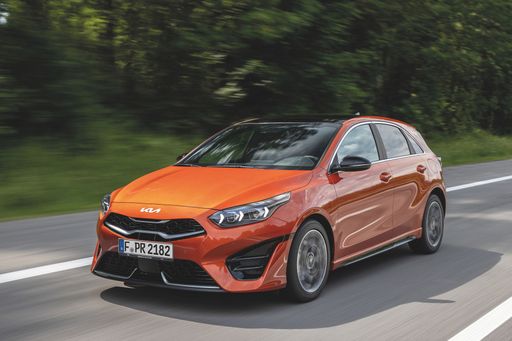 @ press.kia.com
@ press.kia.com
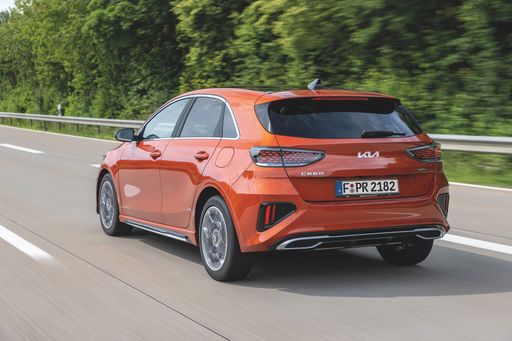 @ press.kia.com
@ press.kia.com
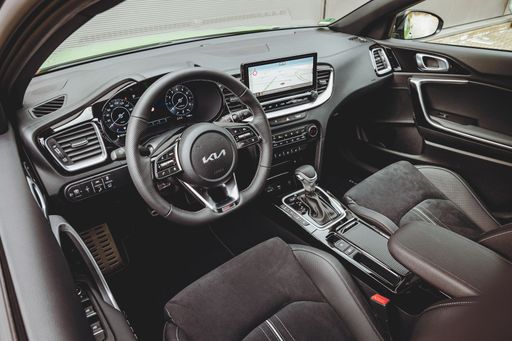 @ press.kia.com
@ press.kia.com
Ford Focus
The Ford Focus is celebrated for its agile handling and stylish design, making it a popular choice among hatchback enthusiasts. Its well-crafted interior offers a comfortable driving experience with intuitive technology features. Whether navigating city streets or cruising on the motorway, the Ford Focus delivers a balanced drive with impressive efficiency.
details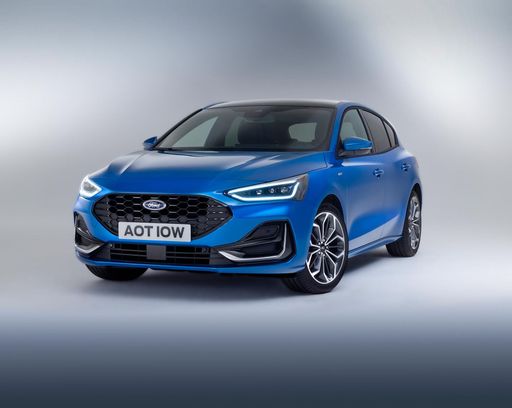 @ focus.fordpresskits.com
@ focus.fordpresskits.com
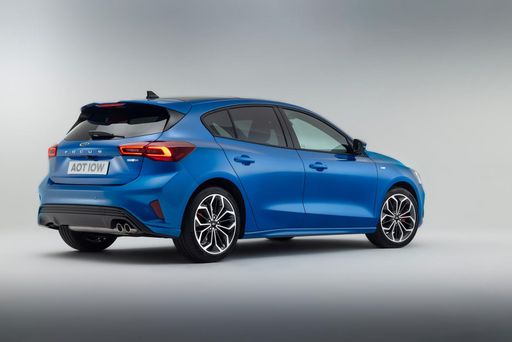 @ focus.fordpresskits.com
@ focus.fordpresskits.com
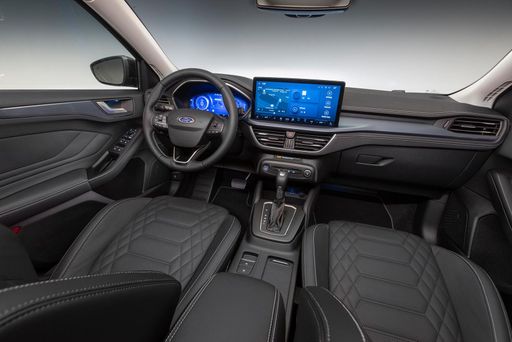 @ focus.fordpresskits.com
@ focus.fordpresskits.com
Ford Focus vs. Kia Ceed: A Hatchback Showdown
In the ever-competitive compact hatchback segment, two models stand out in 2023: the Ford Focus and the Kia Ceed. Both offer a blend of style, performance, and practicality. However, they each have their unique strengths and characteristics that cater to different needs. Let's delve into the details and see how these two hatchbacks compare.
Performance and Powertrains
The Ford Focus offers a more diverse range of engine options, including petrol mild-hybrid electric vehicles (MHEV), traditional petrol, and diesel. Its power output varies from 115 HP in diesel to a robust 280 HP in petrol MHEV. The torque values range from 170 to 420 Nm, reflecting its versatile lineup. With a maximum speed reaching up to 250 km/h and varying acceleration times down to an impressive 5.7 seconds (0-100 km/h), the Focus caters to those who crave power and speed.
On the other hand, the Kia Ceed features a simplified yet efficient lineup with two main power outputs: 100 and 140 HP, both petrol-based. Though it doesn't rival the sheer power of the Focus, it offers commendable acceleration times of 9.5 to 13.2 seconds (0-100 km/h) and a top speed of up to 197 km/h. The Ceed delivers solid performance for everyday driving needs.
Fuel Efficiency and Environmental Considerations
Fuel consumption for the Ford Focus ranges from 4.9 to 8 L/100km, reflecting its varied engine options. Its CO2 efficiency class peaks at G, with emissions ranging from 117 to 183 g/km. For those prioritizing environmental impact, the Focus offers reasonably efficient models.
Meanwhile, the Kia Ceed, using a more straightforward engine lineup, records a fuel consumption range of 6 to 6.4 L/100km. The CO2 emissions range from 137 to 146 g/km, placing it in the E efficiency class, which is less environmentally favorable compared to some Focus models.
Interior and Practicality
The Ford Focus exhibits a slight advantage in terms of trunk capacity at 392 liters, compared to the Kia Ceed’s 357 to 395 liters, depending on the version. Both models comfortably seat five passengers, making them suitable for small families or group outings.
Dimensions and Weight
In terms of physical dimensions, the Ford Focus is slightly longer, with lengths ranging from 4392 to 4397 mm, while the Kia Ceed spans 4315 to 4325 mm. The Focus is slightly wider, with a width up to 1844 mm, compared to the Ceed’s 1800 mm. As for height, the Ceed ranges from 1442 to 1447 mm, slightly surpassing the Focus's 1438 to 1482 mm measurements, providing more vertical space in the cabin.
Both vehicles have comparable curb weights, with the Focus ranging from 1330 to 1529 kg and the Ceed from 1298 to 1390 kg, reflecting similar levels of build quality and stability on the road.
Conclusion: Choosing the Right Hatchback
Ultimately, choosing between the Ford Focus and the Kia Ceed boils down to individual needs and preferences. The Ford Focus appeals to those who desire a versatile array of engine choices and higher performance potential. In contrast, the Kia Ceed is ideal for drivers seeking practicality and a straightforward, reliable engine lineup at a potentially lower cost. Both cars bring unique attributes to the compact hatchback arena, ensuring each buyer finds a suitable match for their automotive desires.

|

|
|
|
|
Costs and Consumption |
|
|---|---|
|
Price
23100 - 31300 £
|
Price
27500 - 42700 £
|
|
Consumption L/100km
6 - 6.4 L
|
Consumption L/100km
4.9 - 8 L
|
|
Consumption kWh/100km
-
|
Consumption kWh/100km
-
|
|
Electric Range
-
|
Electric Range
-
|
|
Battery Capacity
-
|
Battery Capacity
-
|
|
co2
137 - 146 g/km
|
co2
117 - 183 g/km
|
|
Fuel tank capacity
50 L
|
Fuel tank capacity
52 L
|
Dimensions and Body |
|
|---|---|
|
Body Type
Hatchback
|
Body Type
Hatchback
|
|
Seats
5
|
Seats
5
|
|
Doors
5
|
Doors
5
|
|
Curb weight
1298 - 1390 kg
|
Curb weight
1330 - 1529 kg
|
|
Trunk capacity
357 - 395 L
|
Trunk capacity
392 L
|
|
Length
4315 - 4325 mm
|
Length
4382 - 4397 mm
|
|
Width
1800 mm
|
Width
1825 - 1844 mm
|
|
Height
1442 - 1447 mm
|
Height
1438 - 1482 mm
|
|
Payload
470 - 500 kg
|
Payload
495 - 560 kg
|
Engine and Performance |
|
|---|---|
|
Engine Type
Petrol MHEV, Petrol
|
Engine Type
Petrol MHEV, Diesel, Petrol
|
|
Transmission
Automatic, Manuel
|
Transmission
Manuel, Automatic
|
|
Transmission Detail
Automat. Schaltgetriebe (Doppelkupplung), Schaltgetriebe
|
Transmission Detail
Schaltgetriebe, Automat. Schaltgetriebe (Doppelkupplung), Automatikgetriebe
|
|
Drive Type
Front-Wheel Drive
|
Drive Type
Front-Wheel Drive
|
|
Power HP
100 - 140 HP
|
Power HP
115 - 280 HP
|
|
Acceleration 0-100km/h
9.5 - 13.2 s
|
Acceleration 0-100km/h
5.7 - 11.8 s
|
|
Max Speed
178 - 197 km/h
|
Max Speed
186 - 250 km/h
|
|
Torque
172 - 253 Nm
|
Torque
170 - 420 Nm
|
|
Number of Cylinders
3 - 4
|
Number of Cylinders
3 - 4
|
|
Power kW
74 - 103 kW
|
Power kW
85 - 206 kW
|
|
Engine capacity
998 - 1482 cm3
|
Engine capacity
999 - 2261 cm3
|
General |
|
|---|---|
|
Model Year
2024
|
Model Year
2022 - 2024
|
|
CO2 Efficiency Class
E
|
CO2 Efficiency Class
D, G
|
|
Brand
Kia
|
Brand
Ford
|
Kia Ceed
Discovering the Kia Ceed: A Symbol of Modernity
In the dynamic world of automotive engineering, Kia has consistently stood out with its innovative and reliable models. The Kia Ceed is no exception, bringing a blend of efficiency, style, and cutting-edge technology to the table. Let's delve into the details of this eye-catching hatchback and uncover what makes it an alluring choice for modern drivers.
Power and Performance: Under the Hood
The Kia Ceed is equipped with an impressive range of powertrains, offering a selection between petrol engines and mild-hybrid technology. The engine lineup boasts power outputs from 100 to 140 PS, catering to both economical driving needs and those seeking a bit more thrill on the road. The engine choices are complemented by either a smooth manual transmission or a state-of-the-art dual-clutch automatic, ensuring an engaging driving experience tailored to individual preferences.
Efficient and Eco-Friendly Engineering
Kia's dedication to eco-friendliness is evident in the Ceed's engineering, offering remarkable fuel efficiency between 6 to 6.4 L/100km. This focus not only keeps running costs low but also helps reduce emissions, maintaining a responsible footprint with CO2 emissions ranging from 137 to 146 g/km. This efficient performance ensures the Kia Ceed is both a financially savvy and environmentally considerate choice.
Advanced Technologies and Safety Features
Innovation is at the heart of the Kia Ceed's design, with a suite of advanced technological features enhancing comfort and safety. The latest driver-assist systems help keep occupants secure, providing confidence on every journey. Lane Keeping Assist, Forward Collision Warning, and Intelligent Speed Limit Assist are just some of the high-tech features that work seamlessly in the background, making driving both safer and more relaxed.
Styling and Comfort: A Perfect Cabin Space
Stepping into the Kia Ceed, drivers and passengers are greeted by a sophisticated interior, designed for comfort and style. Seen in multiple variants including the Nightline Edition and GT Line, the Ceed offers a premium feel across all its models. With dimensions that promise ample space—stretching up to 4325 mm in length and offering a boot capacity between 357 to 395 L—the Ceed perfectly accommodates both daily commutes and adventurous getaways.
Value for Money: A Wise Investment
Balancing a competitive initial outlay, ranging from €25,590 to €35,090, with low running costs, the Kia Ceed redefines value for money. This hatchback's adaptability to various lifestyle needs, paired with monthly costs from €887 to €1,019, positions it as a wise investment in the current automotive market.
Conclusion: The Kia Ceed in a Nutshell
The 2024 Kia Ceed superbly combines power, efficiency, and cutting-edge innovations, making it a noteworthy contender in the hatchback segment. Whether it’s the eco-friendly credentials, advanced safety systems, or the blend of practicality and style, the Kia Ceed is primed to lead the way in the evolving era of modern vehicles.
Ford Focus
A Revamped Classic: The Ford Focus
The Ford Focus has long been a staple in the compact car market, offering a blend of practicality, performance, and affordability. With the latest iterations, Ford continues to build on this reputation, introducing a series of technical enhancements and innovative features aimed at both seasoned car enthusiasts and daily commuters alike.
Innovative Powertrains and Engine Performance
The latest Ford Focus models are equipped with a variety of engine options tailored to diverse driving preferences. At the heart of the lineup are the EcoBoost Hybrid engines, which combine efficiency with performance. These mild-hybrid petrol engines are designed to deliver responsive power with a promise of reduced emissions and fuel consumption.
For those who prefer diesel, the EcoBlue engine offers a smooth and quiet ride with impressive torque and fuel economy. Meanwhile, the high-performance ST variant, powered by a robust 280 PS petrol engine, caters to drivers seeking a sporty experience.
Driving Dynamics and Comfort
One of the Ford Focus's standout features is its superior driving dynamics, balanced perfectly between comfort and agility. Whether equipped with a manual, automatic, or dual-clutch PowerShift transmission, the Focus ensures a responsive drive that adapts to both urban and highway conditions.
The vehicle's suspension system has been finely tuned to absorb road imperfections, offering a composed ride that neither sacrifices comfort nor handling precision. With front-wheel drive across the range, the Focus provides a stable and reassuring road presence.
Efficiency and Sustainability
The Ford Focus impresses with its commitment to fuel efficiency. The EcoBoost Hybrid engines deliver consumption as low as 5.2 L/100km, while the diesel variant offers an even more frugal 4.9 L/100km. These figures not only promise reduced running costs but also lower CO2 emissions, aligning with current sustainability trends.
With CO2 efficiency classes ranging from D to G, the Focus demonstrates a strategic blend of performance and environmental consideration, an important factor for environmentally conscious drivers.
Modern Design and Versatility
In terms of aesthetics, the latest Ford Focus models feature a sleek, aerodynamic silhouette complemented by modern design cues. Ranging from the sporty ST-Line to the sophisticated Titanium editions, each trim offers a distinct personality while maintaining the Focus's core design philosophy.
The Focus continues to offer practical versatility with features like a spacious 392-litre boot, making it suitable for family trips and everyday errands. The interior is smartly designed, providing ample space for five passengers and affording a comfortable, ergonomic driving position.
Technological Enhancements
Technology in the Ford Focus reflects the needs of today's connected driver. The vehicle is equipped with the latest Ford SYNC infotainment system, featuring a user-friendly interface and seamless smartphone connectivity. Driver-assist features such as adaptive cruise control, lane-keeping aid, and traffic sign recognition enhance safety and convenience.
Moreover, the Focus offers various driving modes to tailor the driving experience to different conditions, thus ensuring that drivers have both flexibility and control at their fingertips.
Conclusion: An Evolved Icon
The Ford Focus remains a dominant player in its segment, thanks to its comprehensive suite of innovative features, efficient powertrains, and dynamic styling. This model continues to evolve, providing a balanced blend of performance, economy, and technology, making it a worthy choice for those seeking a reliable yet exciting compact car.
The prices and data displayed are estimates based on German list prices and may vary by country. This information is not legally binding.
